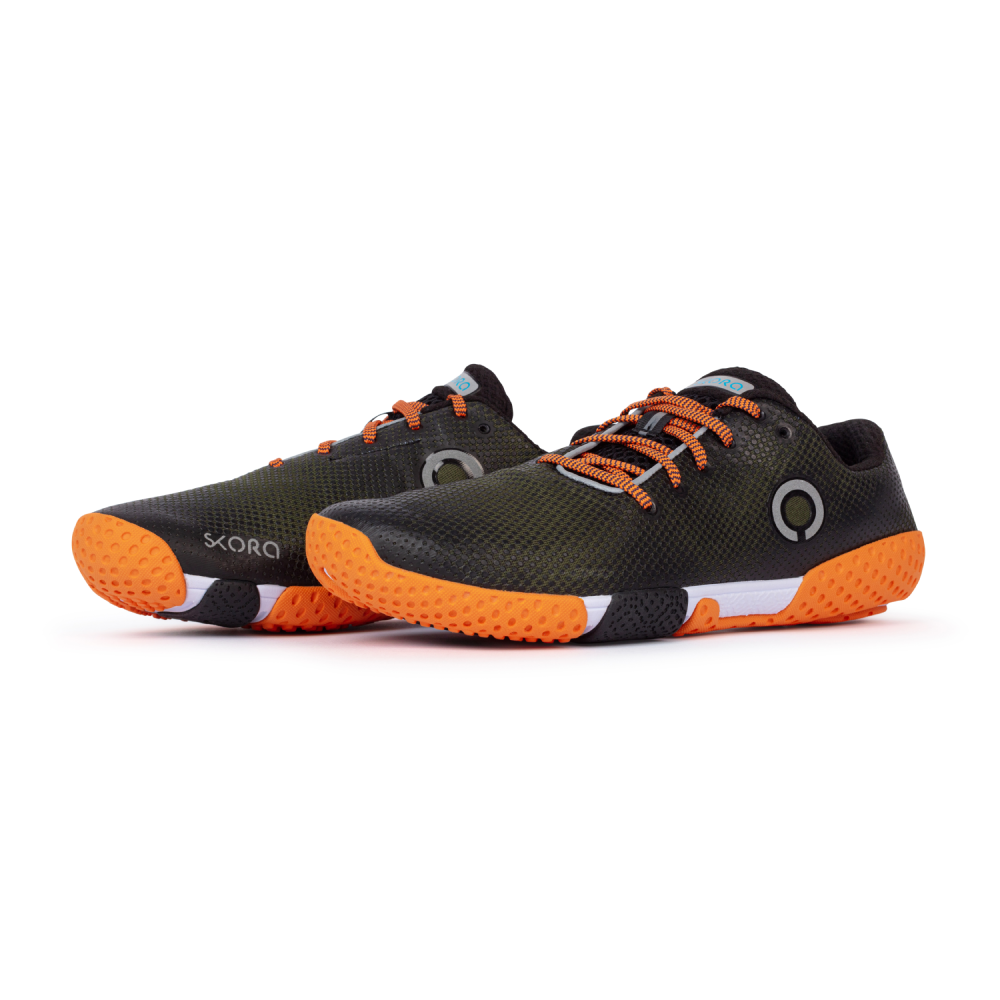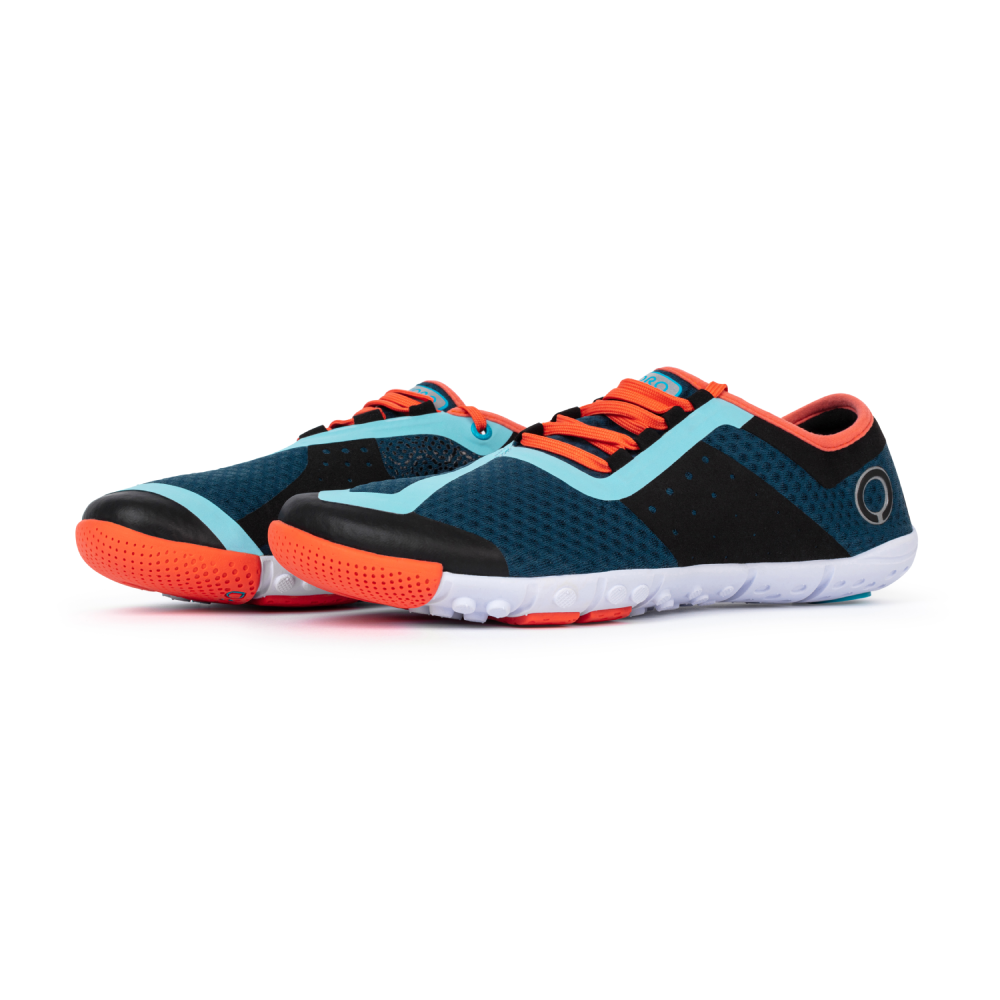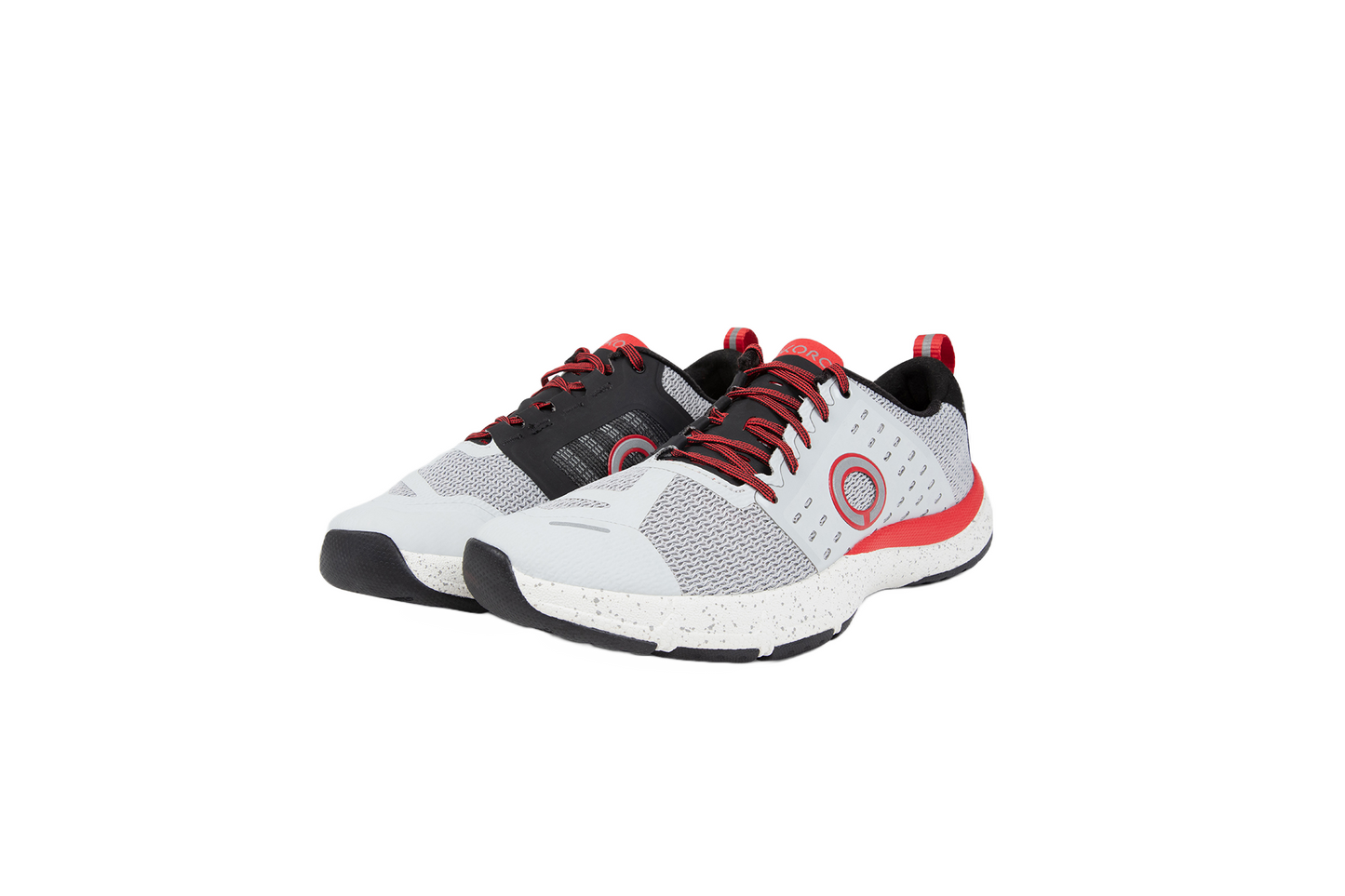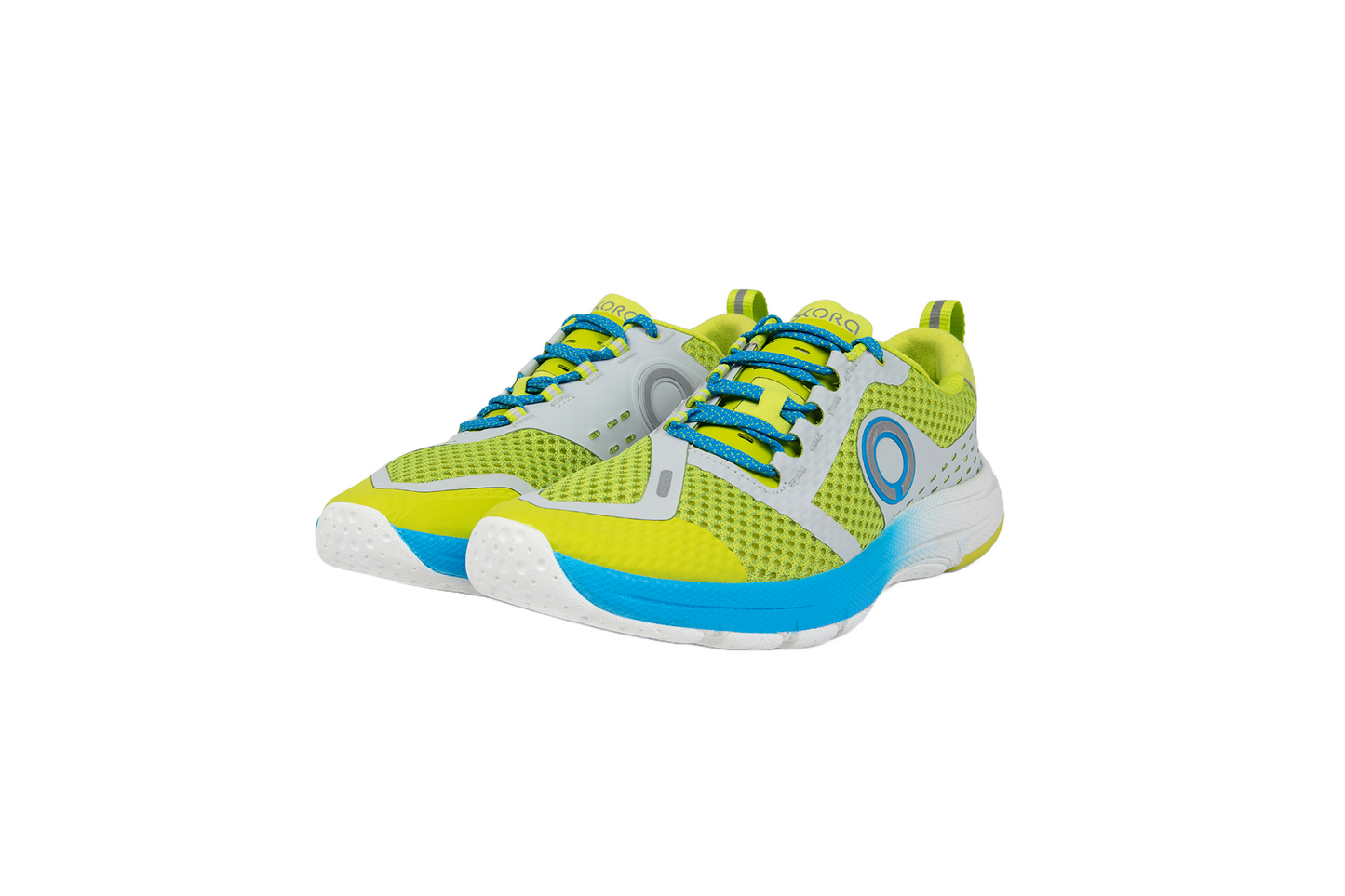When injury strikes, be it mild or severe, the first things we usually go to as runners are ice, NSAIDs, or a local sports doctor. All of these are great options for treating injuries quickly, but how can we keep them from recurring or even occurring in the first place? In order to truly recover from an injury, you have to get to the root of the problem. This often lies with structural abnormalities, muscle imbalance, or inefficient biomechanics.
This article will present how using SKORA footwear on a regular basis can help prevent or treat several common running injuries so they never hopefully never return.
SKORA Shoes
All of SKORA’s shoes are designed with an anatomical last, zero-drop design, and minimal cushioning to help the body relearn proper mechanics without the various hazards of running in bare feet. Many other shoe companies offer zero-drop or low-profile models, but SKORA’s founding principles lie in the philosophy that running should not hurt you. This is true if the body moves in a natural way while running, your muscles are strong, and your level of flexibility is appropriate to the demands of running.
SKORA can aid in improving all of the above factors when worn consistently with an intelligent progression. If you are new to minimal shoes but have a history of injury, start building time in SKORAs very slowly per this guide. SKORAs will initially be viewed as a specific training tool, but then you can move to wearing SKORAs full-time as you become accustomed to their more natural fit and feel.
If you have been prescribed custom orthotics, it is perfectly fine to wear these with SKORAs. The shoe will still have a positive impact on improving form and reducing risk of injury. Overtime, you may find that your orthotics are no longer needed to protect you from injury as you get stronger and more efficient.
Plantar Fasciitis
What It Is- Plantar Fasciitis (PF) is a condition that causes pain under the heel or along the arch in runners that is typically worse upon waking in the morning. This injury may be caused by recurrent micro-tears along the arch due to speed work, hill training, or simple overuse. Typically, scar tissue will develop over the heel if the injury persists, which may lead to a “crunchy” sensation when you rub the area with your fingers.
How SKORA Helps- Modern theory regarding PF pain suggests that the root cause of this disorder lies in a tightening of structures in the calf muscles (the gastrocnemius and soleus), which inhibit the Achilles tendon, which put extra strain on the arch muscles. If the arch is weak due to running in overly-structured shoes, then it is already predisposed to injury.
PF tends to respond well to minimal shoes as footwear with a low heel-to-drop allows the Achilles and calf structure to fully relax while running, strengthens the arch, and offers the heel a softer landing upon landing. If you have PF, consider the Core for a low-profile experience with a soft heel and protective forefoot to realign your natural ground-strike more towards the mid-foot.
Runner’s Knee
What It Is- Runner’s knee goes by many other names, Patellar tendonitis, patellofemoral stress syndrome, and others, but the basic pretense is the same- your knee hurts around the joint when you walk, run, or climb stairs. This condition is usually linked to inflammation around the patella, but there are also causes upstream from the site of pain that could be at play. Like a crimped garden hose, muscle tightness and/or knots in the quadriceps and hamstring can prevent proper circulation from reaching the area. This would prevent the problem from healing properly, and many modalities simply treat the symptoms of Runner’s Knee, not the cause.
How SKORA Helps- SKORAs can help treat this injury by allowing your knee drive to improve from a more forward foot strike (opening the joint rather than compressing it), increase range of motion through the hips, and strengthen all the muscles around the knee to a further degree than traditional trainers. Minimal footwear would also aid in the natural flex and extension of the hamstrings and quads, loosening any stubborn tightness to a significant degree. The Form is a good choice for this injury due to its moderate cushioning in a zero-drop package.
Shin Pain
What It Is- Often referred to as the umbrella term “shin splints”, shin pain in runners can be either anterior or on the medial aspect of the shin. This condition is typically due to inflammation in one of the shins relatively large compartments, or micro-tears along the periosteum close to the bone. Either way, this is a painful, often lingering condition that requires some biomechanical analysis to kick for good.
It is very important to rule out a stress fracture in the case of severe shin pain, as this is a common site for such injuries. Consult with your doctor if shin pain persists for more than a few weeks despite resting and RICE protocol.
How SKORA Helps- Heel striking and plastic arch plates between the heel and forefoot seem to be linked to this condition, so good advice for those suffering from shin pain is to “get low” to the ground and try to redefine your habitual foot strike. SKORA shoes can help this injury by activating and strengthening all of the lesser tendons, muscles, and ligaments that comprise the complex pockets of the shin’s structure, enable this area to absorb more landing shock, and increase calf flexibility to take pressure off the shin compartment.
The Phase is SKORAs most minimal option at present, so this is a good choice for those needing some real work on kicking this often debilitating injury. Start with some light jogging on a soft surface in the Phase, notice how the body is responding, and then take your new SKORAs out for a few test runs on the road.
Illiotibial Band Syndrome
What It Is- ITB Syndrome is a condition that is caused by tightness along the outer side of the thigh that produces a friction effect at the knee, hip, or over the band itself. This injury is painful, but usually responds well to such modalities as stretching, massage, and a change in footwear.
Running is largely a unilateral sport, meaning it is done in one direction. Working in all three planes of motion via drills, skipping exercises, and strength training can greatly reduce your risk of ITB injury, as well.
How SKORA Helps- SKORAs, being highly flexible shoes, allow the foot to move with more fluidity and functionality at ground-strike. These more dynamic vibrations work to contract and relax the leg muscles in sync while running, thereby loosening any adhesions in your muscle fibers. For ITB pain, running in SKORAs, doing lateral exercises, and working on your form all will help alleviate the root cause of this condition. The Base may be the best option for ITB sufferers due to its inherent flexibility, soft, mobile upper, and light-weight design to take unnecessary stress off of the knee insertion of the ITB.
See SKORA founder David Sypniewski’s story regarding ITB Syndrome HERE.
DISCLAIMER: While this article was written by a professional coach with many years of research and experience working with runners, this should not be taken as medical advice. If you have a persistent injury linked to running, always see a medical professional before altering any aspect of your training regimen. The above is simply sound advice, not a prescription for treating running ailments.
-Peyton Hoyal
You may also like: The specifics of “run real” / Transitioning to lower profile shoes
Subscribe to our newsletter & be entered into our monthly free shoe drawing!




